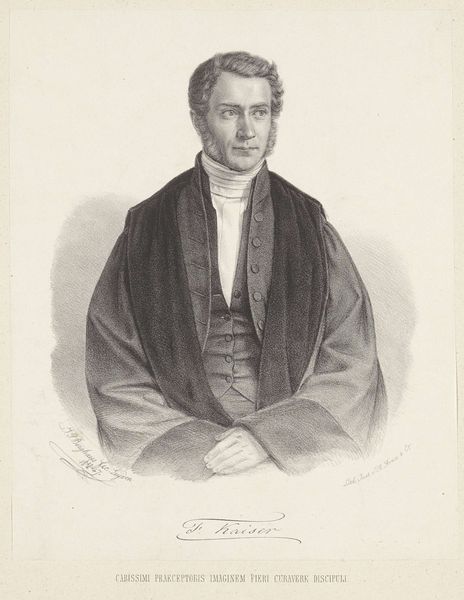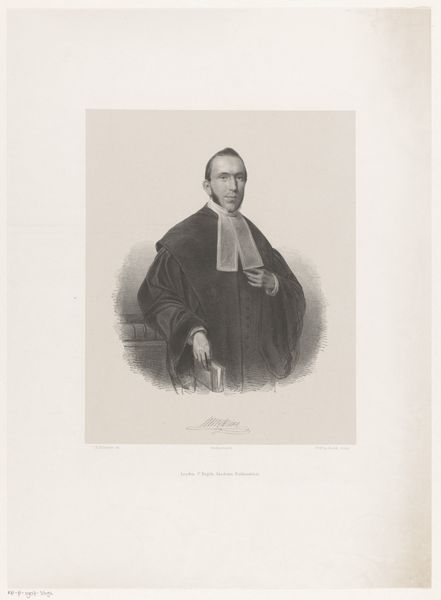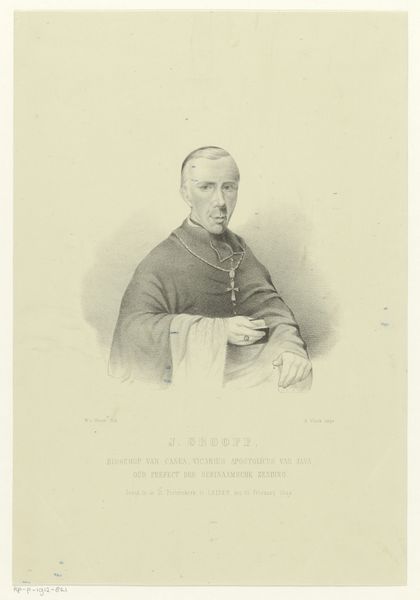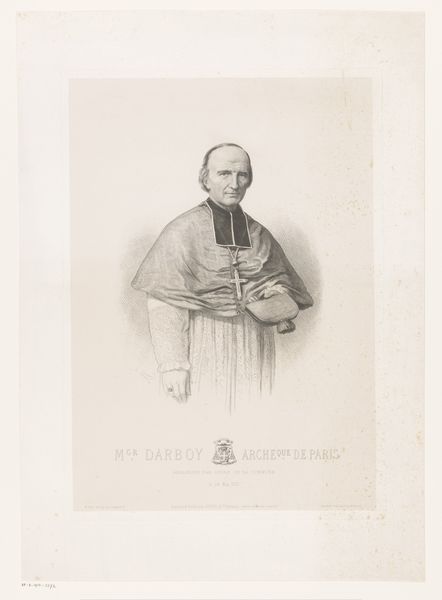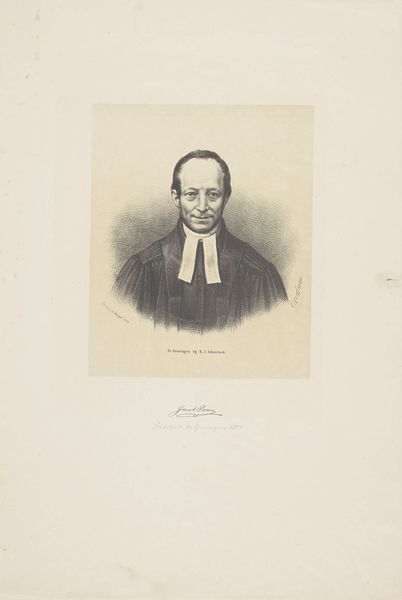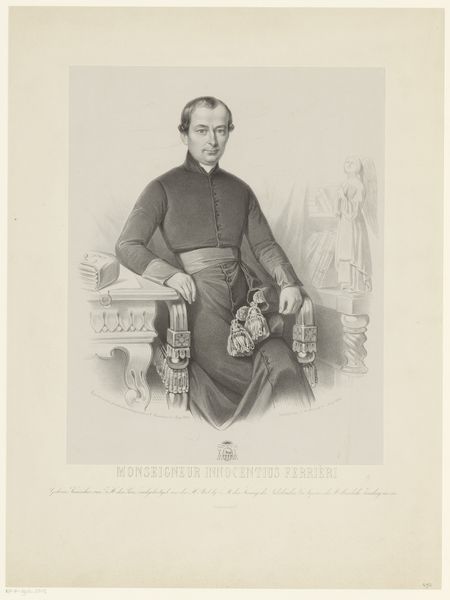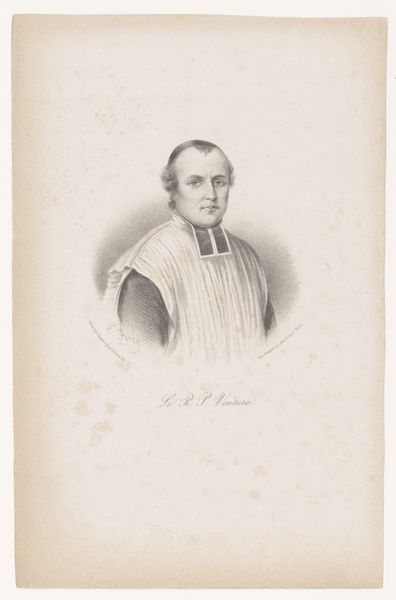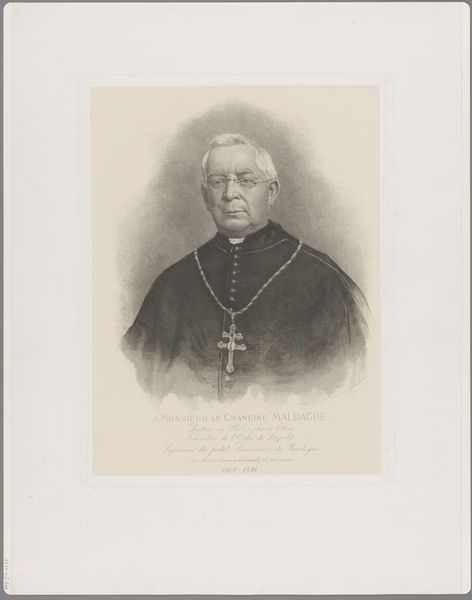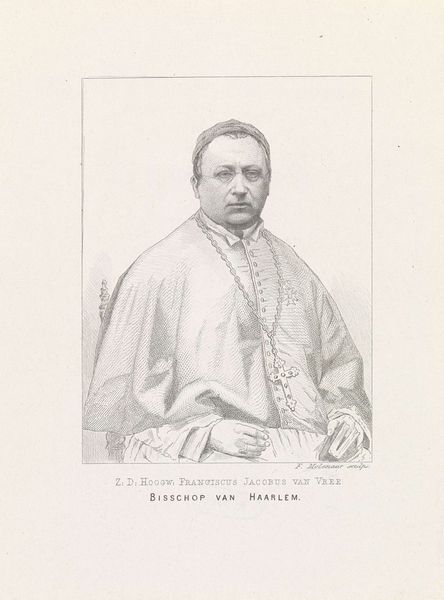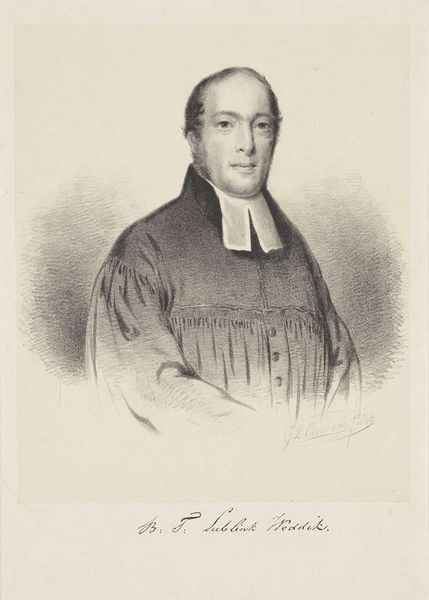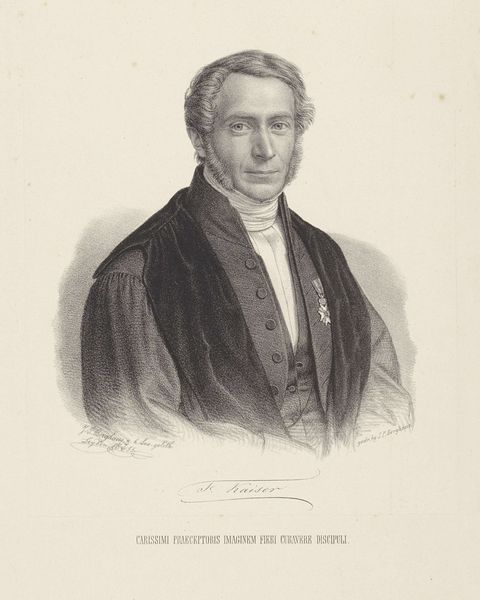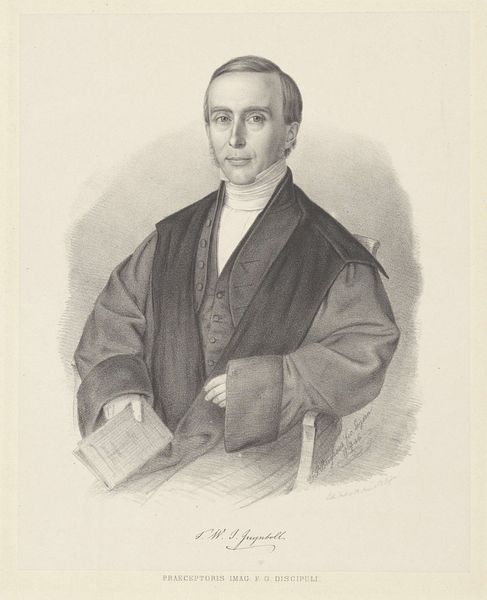
drawing, pencil
#
portrait
#
drawing
#
pencil drawing
#
pencil
#
portrait drawing
#
academic-art
#
realism
Dimensions: height 146 mm, width 97 mm, height 330 mm, width 250 mm
Copyright: Rijks Museum: Open Domain
Curator: I'm immediately struck by the air of quiet authority emanating from this portrait. There's a gravity to it. Editor: Indeed. What we're looking at is a pencil drawing from 1844, titled "Portret van Martinus Joannes Niewindt" by Johann Peter Berghaus. The work is part of the Rijksmuseum's collection. Curator: Niewindt's gaze is very direct, isn’t it? It's interesting to note the book he holds. To me, it is symbolic, representing not only knowledge but perhaps also the weight of religious doctrine and responsibility he carries. Editor: Symbolically rich, absolutely. His attire also speaks volumes. The cross and medal suggest devotion and service. Consider the social context, too. The Church's role in the 19th century Netherlands carried significant social and political weight; such symbols acted as visual confirmations of the church’s established place. Curator: And yet, there's something humble in his expression. His brow is furrowed, almost pensively. It suggests that beyond the symbols of power, there’s a human being grappling with complex issues. Editor: A perceptive observation. I wonder how the artistic circles viewed the image in relation to other artistic images and public perceptions of the church at the time? Also interesting is the level of detail Berghaus was able to capture using just pencil on paper. You can feel the weight of the book he’s holding; sense the fabric of his garments. Curator: Right, this is what anchors this firmly to the principles of Realism, which makes the imagery of faith that much more grounded, immediate. It's not just a depiction of religious authority, but an exploration of the individual embodying it. Editor: In essence, this portrait becomes more than just a likeness. It acts as a document of faith, an object imbued with historical and spiritual weight, still radiating almost two centuries later. Curator: Precisely. It reminds us how artistic choices can solidify social structures or, as we see here, invite deeper reflections about a specific point in time.
Comments
No comments
Be the first to comment and join the conversation on the ultimate creative platform.
